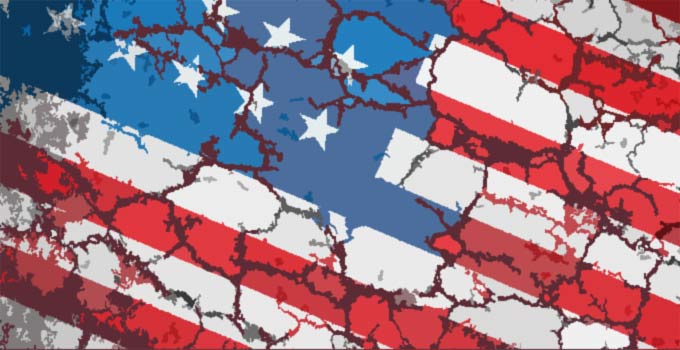The twin props of America’s emergence and global dominance since the end of the Second World War have been its military machine and the American dollar as a global reserve currency.
Between the two, whereas the military option has had its limitations in advancing American interests as we have seen in some situations, it is the dominance of the American dollar as global currency that has been the more effective factor in projecting and consolidating American dominance.
How did this come about?
In the 1930s right up to the eve of the Second World War, America was a bankrupt country. The country was in the throes of industrial and financial decline. Industrial production had plummeted and the banks and financiers that had loaned the monies to the industries were folding up one by one. This was the time of the great depression in which the American economy shrank considerably.
- Tinubu, Atiku, others mourn as Dokpesi dies
- Fuel Subsidy: Queues return to NNPC stations as others stop selling
Then came the Second World War.
As the countries of Europe fought each other in great bleeding batches, leading to huge insatiable demands for ordnances of war, raw materials and minerals, America sitting out the war initially in comfortable isolation from the din, stepped in to fill out the vast orders for arms, munitions and war materiel. And suddenly the country that was bankrupt and was on the verge of total economic collapse got revived almost overnight from war production.
As American industry began to experience tremendous expansion, so also its banks and financial institutions thanks to the war. The most telling development in this regard was the strengthening of the American dollar wherein countries which desired to purchase things from America were compelled to do so in the American currency. This enabled the American Treasury Department the power to determine the parity of the dollar against the currency of the country that is doing the purchasing of American goods.
Conversely, where American assistance was sought to assist or support countries engaged in the war, America instituted the ‘’lend lease act’’ wherein such countries had to part with their gold reserves and important strategic assets and possessions. Britain in particular, which at the time of the Second World War was arguably the richest country in the world with its British Empire, was the principal victim of the ‘’lend lease act’’ parting with its gold reserves, strategic islands, military bases and the like in exchange for nearly obsolete military equipment and platforms.
Indeed the war proved so profitable for America that even its war efforts were financed by others from the ‘’dollar diplomacy’’ it pursued against other countries. At the conclusion of the war, American vaults were so overflowing with gold that it became a challenge to American policymakers what to do with it.
Having ended up after the war with so much control and dominance of the world economy, American policymakers harped on the idea of setting up the International Monetary Fund and International Bank for Reconstruction and Development, better known as the World Bank, to consolidate American dominance of the global economy. The way this works is thus; the IMF works as a clearing house for monetary and currency policies favourable to American interests, like devaluation, open trade, and balance of payments and is always headed by a European.
The World Bank where the money is, is always headed by an American and its operational arm, the International Finance Cooperation (IFC), serves both as a lender, financial consultant and clearing house to American private capital as in major banks like JP Morgan, Wells Fargo, BankAmerica etc. The IFC also has a long list of American corporations and institutions which are usually introduced (read compelled) as preferred ‘’experts’’ to be the exclusive bidders for the job or project for which the World Bank’s assistance is sought.
By this arrangement and structure, the twin American-controlled IMF and World Bank ensured the dominance of the American dollar as a global reserve currency in which much of world trade and transaction is conducted. With this nice and convenient arrangement, the American dollar came to penetrate global trade and economic exchange and along with it, American dominance of the world economy.
However by the late 1960s into the early 1970s, the position of the dollar began to come under serious challenge as a reserve currency. First of all, a number of countries had sufficiently recovered from their economic positions to increasingly challenge American dominance of the world economy. And increasingly, over the intervening years, the Americans came to discover that the gold reserves it used to prop up the dollar’s position as global reserve currency were dwindling and if not halted might result in the greenback steadily losing its value against other currencies.
Thus in 1971, under President Nixon, America opted to remove the gold peg on the dollar letting it float as a currency. In standard economic practice, this was anomalous because it meant that whoever was trading with America and using the dollar was doing so with an unsecured currency and as the dollar loses its value progressively, such a country stands to incur deficits that go with such development.
Aware that such a development was dangerous for American standing in the world, as countries might choose to boycott the dollar, American policymakers sweated on a solution. They set their eyes on the vast and lucrative trade in oil in which American companies dominated globally. Their eyes zeroed in on Saudi Arabia, the largest oil-exporting country in the world with deposits of the commodity running to billions of barrels. But they found an obstacle in King Faisal, the then Saudi monarch, who was reticent about the Americans.
Indeed, King Faisal was the main force behind the 1973 oil embargo which hurt the Americans and which led them to resolve never to let it happen again. It also brought home to the Americans the urgent need to secure a peg for the dollar without which its status as a global reserve currency would come under serious stress.
Thus, in the same year of the embargo, the Americans struck a deal with the Saudis in which all oil trade will be designated in dollars. This ’petrodollar’ arrangement secured the necessary peg for the dollar following the removal of the gold standard in 1971 and had since then helped to sustain its supremacy as a global reserve currency.
But with development following the war in Ukraine, the Saudis, along with a slew of other major economic countries in the world, are in the process of yanking off the dollar as a reserve currency in their trade. This, in essence, is what the de-dollarization currently in process is about. Should this continue, it is envisaged that before long the unchallenged position of the dollar as the global reserve currency would cease and with it the control and dominance of the global economy by America.
How would the de-dollarization take shape and what would be its outcome? (To be concluded)

 Join Daily Trust WhatsApp Community For Quick Access To News and Happenings Around You.
Join Daily Trust WhatsApp Community For Quick Access To News and Happenings Around You.


